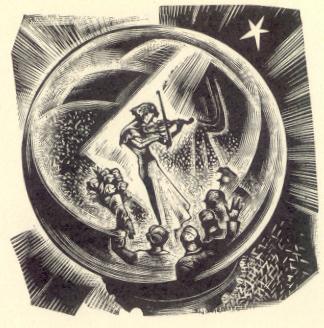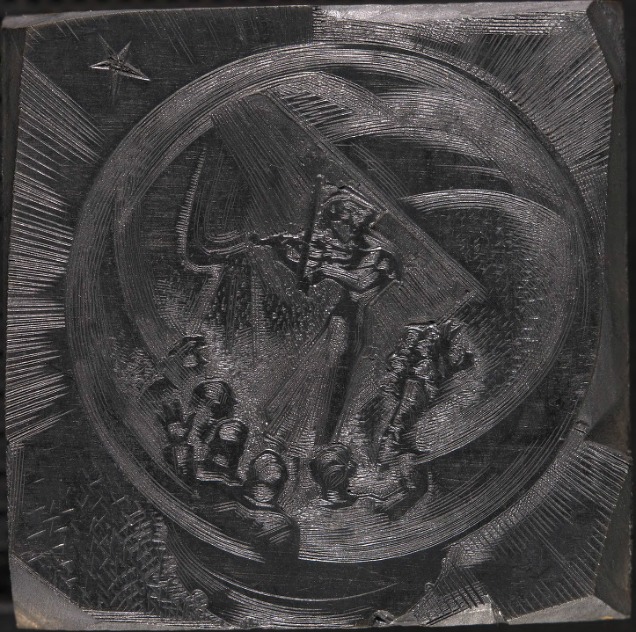The Girl : IMAGE 30 : Glorious Future
The Boy and The Girl have gone to the amusement park in high-spirits to celebrate their high school graduation. I30 is the second of three sequential small images that narrate a side-visit to the fortune teller’s booth.1 In the first, I29, a glow emanates from the fortuneteller’s crystal ball into which the Boy and the Girl hypnotically gaze. I30-I31 contain visions of idealized futures—futures that echo the inspirational commencement address (I11-I19) — the American Dream. In I30 The Girl foresees herself playing violin before an audience that includes an adoring father and an admirer (The Boy?), who is about to fling a celebratory bouquet upon the stage. In an allegorical reading of Vertigo as a proletariat novel, The Girl serves as a symbol of Liberty, just as The Boy, who envisions himself working on a building site, the can-do spirit of Labor. The frustration of their union and failure of their dreams would reflect an ennervating sickness of society. Ward subtly links these moments together with the recurring symbol of a single star, one of Vertigo's central and multivalent symbols, here implying the promise of a glorious destiny.
(Vertigo introduces the star in I7, within a luminous halo above the twilight skyline, where it seems to beckon The Girl toward her high school commencement exercises and to a valorized world beyond the cloister of childhood. The star quickly reappears in I11, during the stirring if sententious commencement day address, where it shimmers in the sky above the prow of Christopher Columbus’s ship. Its placement in I30-I31 implies that, presumably, The Girl and the Boy should expect to meet a destiny as exciting as Columbus’s.)
Placing an idealized vision within a globe within the intimate space of the small block suggests an act of framing—an example of a story within a story (see also text accompanying I113). On one level, framing demonstrates the novelist’s resourcefulness, his pleasure in telling stories. On another, it serves as a trope of self-awareness, encouraging readers to question the determining assumptions of their own lives, and, possibly to contemplate the transforming power of art. One immediately thinks of Orson Welles's use of a crystal globe in his 1941 film, Citizen Kane (four years after Vertigo), where it conjures up the idealized world of innocent childhood.
Print

